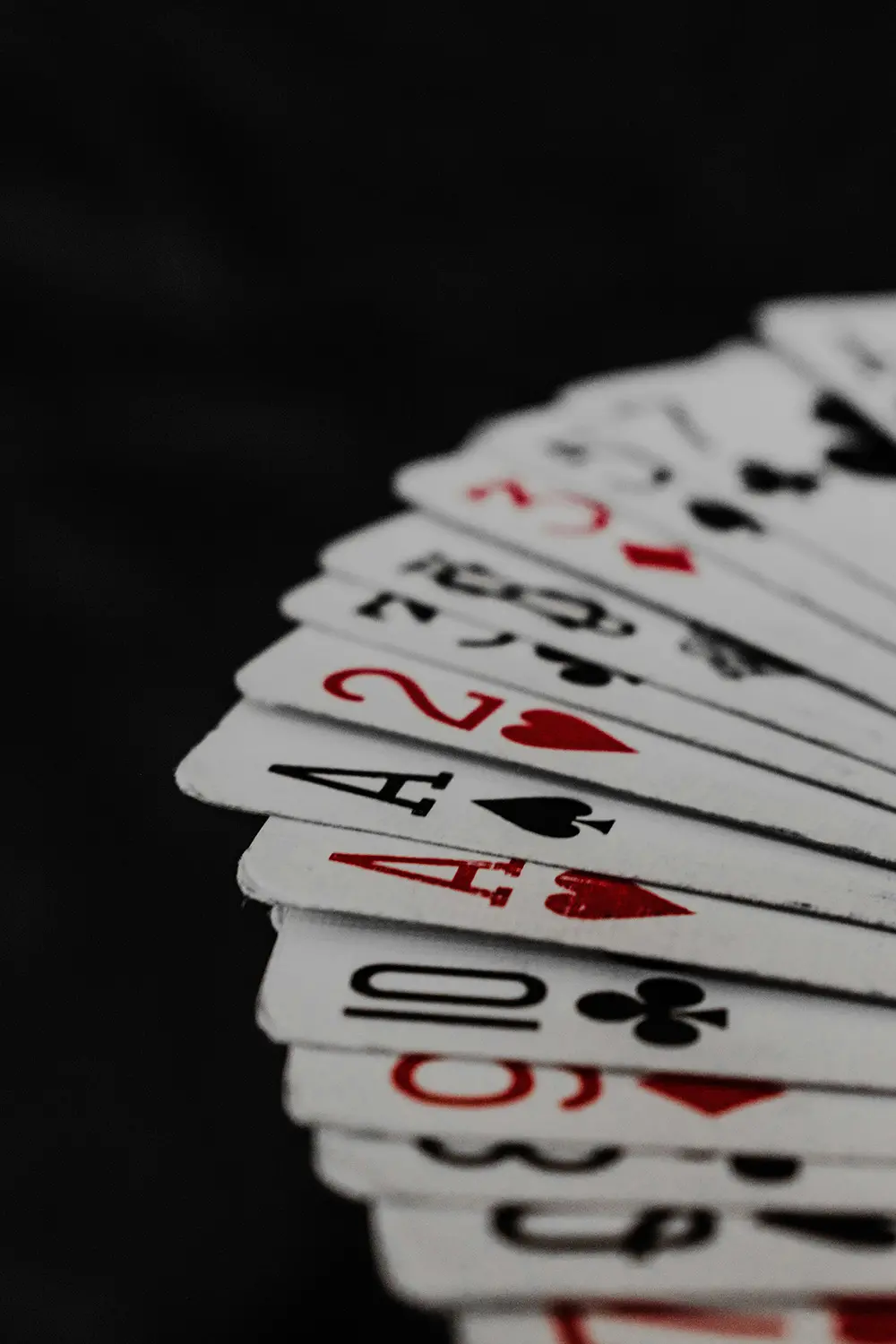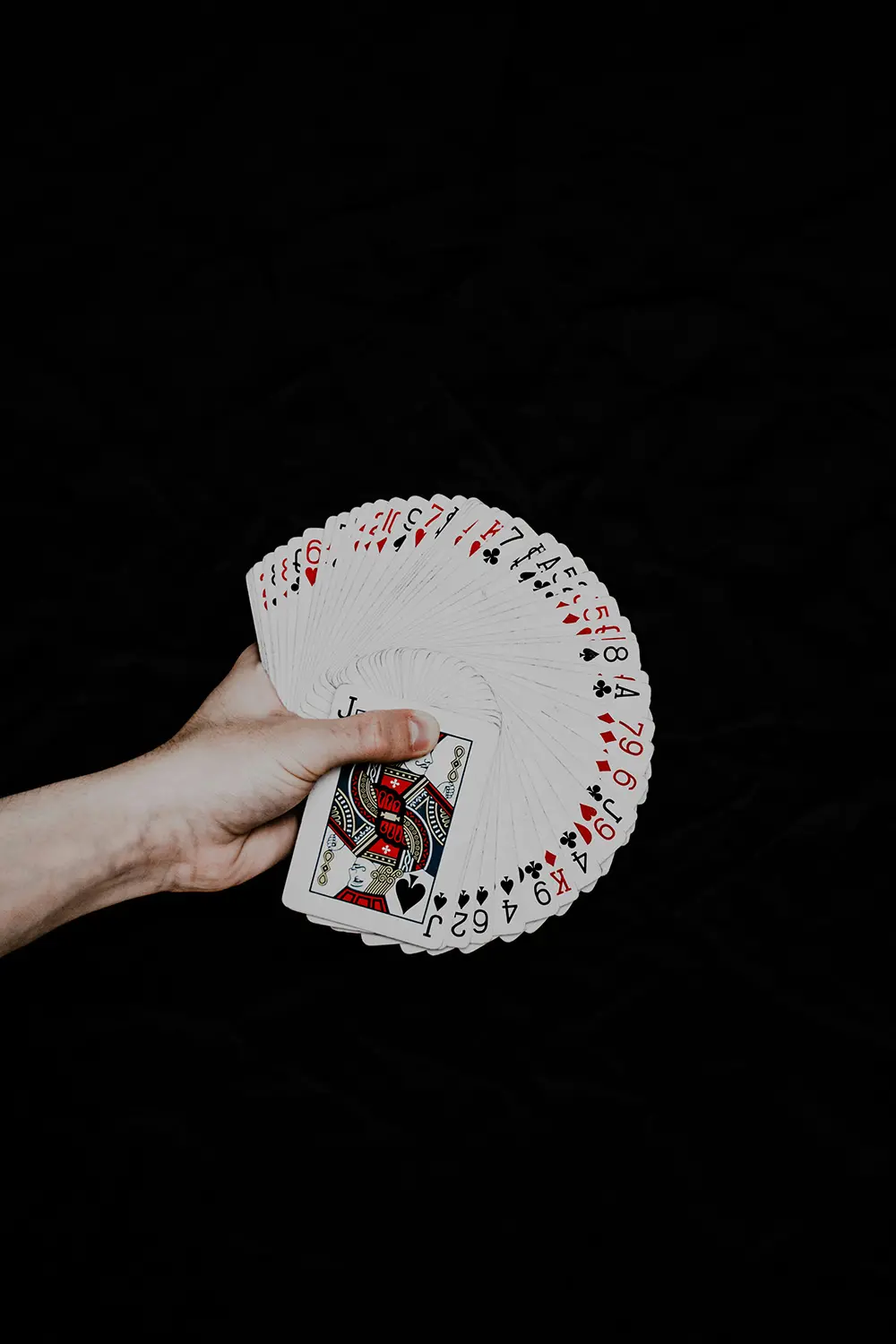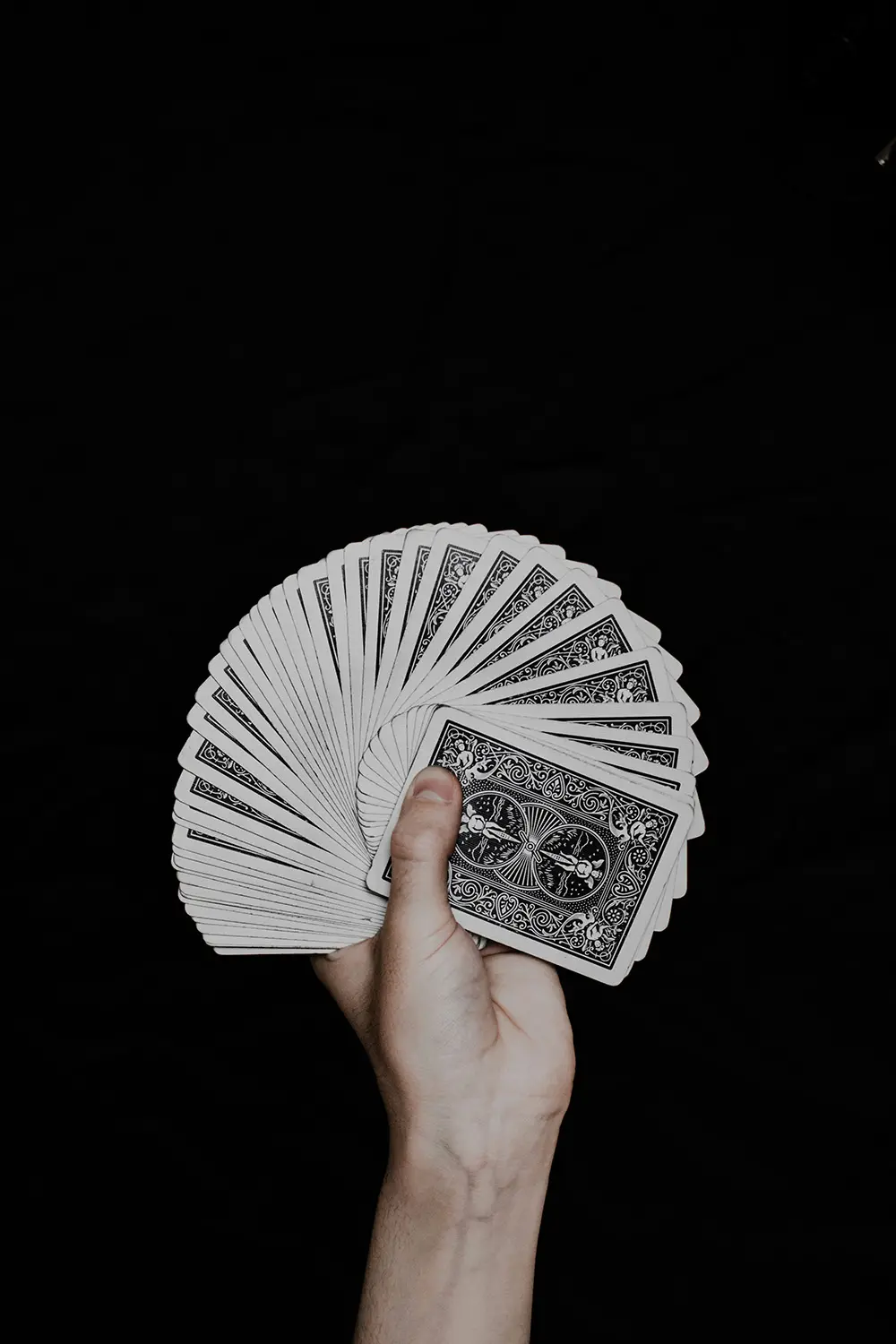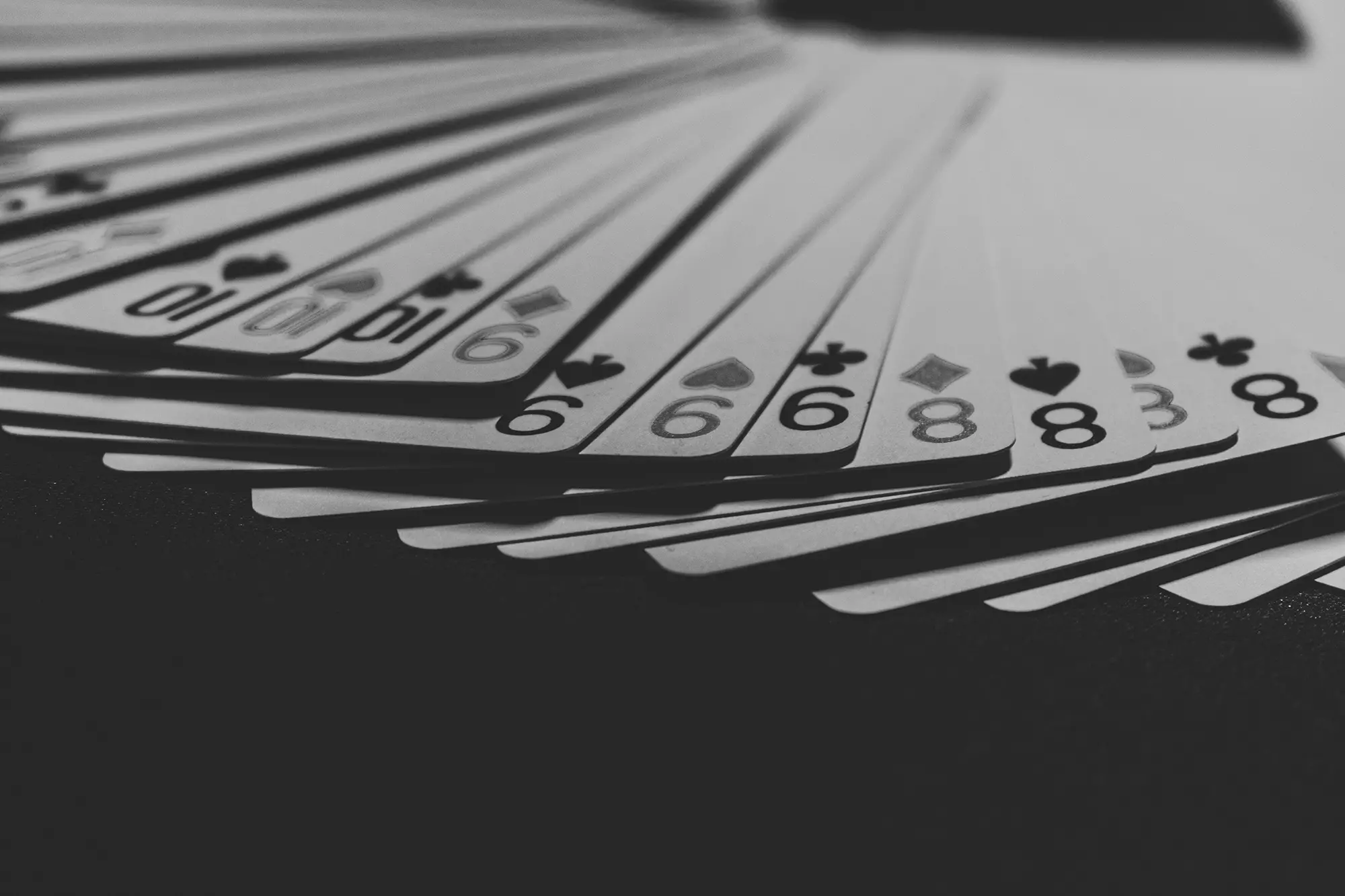RummyRang Game Rules
Welcome to the heart of RummyRang—where every card flip is a calculated dance of skill! These rules are your roadmap to mastering India’s favorite rummy battlefield. From jokers to sequences, we’ve laid it all out—dive in and deal like a pro!
The Rummy Mission
The goal of RummyRang is straightforward yet deliciously tricky: arrange all your cards into valid sequences and sets before your opponents do. You’re not just playing cards—you’re crafting a winning hand, melding runs of consecutive cards (sequences) and groups of same-rank cards (sets) to declare victory. The catch? You need at least two sequences, one of them pure—no jokers allowed—to seal the deal.
It’s a race of wits, not luck. Every draw, every discard, is a step toward outsmarting the table. Whether you’re in a bustling Mumbai card circle or a quiet Bangalore evening match, the objective remains: reduce your points to zero by forming a perfect hand, then slam that “Declare” button with the swagger of a rummy champ!

Deck & Joker Setup
RummyRang deals from two standard 52-card decks—104 cards total—plus a sprinkle of wild magic with two printed jokers per deck, making four jokers in play. That’s 108 cards shuffling around, each suit (Hearts, Diamonds, Clubs, Spades) bringing 13 ranks: Ace through King. Picture it: a vibrant pile of potential, stacked and ready for your strategic genius to unravel. Every card’s a piece of the puzzle, from the lowly 2 of Clubs to the regal King of Diamonds, waiting for you to weave them into a winning tapestry.
At the start, a wild card joker is drawn randomly from the closed deck—say it’s the 9 of Spades. Suddenly, every 9 across all suits becomes a joker too, joining the printed ones as wildcards. These jokers are your golden tickets, subbing in for any card to complete a sequence or set. The Ace flexes its muscle here, acting as 1 or sliding after King in a high sequence—your call based on the hand you’re building. Imagine drawing that wild 9 early—it’s like finding an extra ladoo at a festival feast, a sweet twist that shifts the game in your favor.
The dealer shuffles both decks into one hefty stack, cuts it, and deals 13 cards to each player—your starting arsenal. The rest forms the closed draw pile, with one card flipped face-up to kick off the discard pile. If fewer than four players join (minimum two, maximum six), the deck still stands at 108—no skimping on the chaos! This setup ensures every match is a full-on rummy rumble, with enough cards to keep the table guessing and the jokers popping up like surprise guests at a Diwali card party. The dual-deck approach doubles the depth—more cards mean more melds, more risks, and more chances to outsmart your rivals.
The shuffle’s no casual affair—RummyRang’s system mimics a seasoned card master, blending the decks so no two games feel the same. That first wild joker draw? It’s a moment of suspense, like the toss in a cricket match—will it be a low 3 or a mighty Queen? Once revealed, those rank jokers (all four of them) join the printed jokers, creating a wildcard army of eight. They’re not just fillers; they’re game-changers—turn a shaky 5-6 into a solid 5-6-7, or patch a set of 10s when the Diamonds go missing. The Ace’s dual role adds a layer of cunning—play it low with 2-3 for a quiet build, or high with Q-K for a dramatic finish.
Each player’s 13-card deal is your canvas—plenty to work with, but not so many you’re drowning in options. The closed pile’s a mystery box, thick with possibilities—could be a joker, could be a dud. The discard pile starts small but grows fast, a public diary of the table’s moves. With two to six players, the deck’s size never shrinks—108 cards keep the game meaty, whether it’s a cozy duel or a six-way showdown. Fewer players might mean quicker rounds, but the joker density stays spicy, popping up just often enough to keep you on your toes.
This setup’s roots run deep—two decks echo India’s love for big, boisterous card sessions, where families crowd around tables during festivals. The jokers? They’re the wildcards of lore, like the unpredictable uncle who turns every game upside down with a sly move. RummyRang keeps that spirit alive, ensuring every shuffle’s a fresh battlefield. The 13-card deal—why 13? It’s the sweet spot: enough for two sequences and a set or two, but tight enough to force tough choices. From the moment those cards hit your hand, it’s a rummy riot—108 cards, eight jokers, and a table full of foes ready to test your mettle!
Sequences: Pure & Impure
Sequences are the backbone of RummyRang—runs of three or more consecutive cards in the same suit. A pure sequence is your holy grail: no jokers, just clean, unbroken suit harmony—like 4-5-6 of Hearts or 10-J-Q of Clubs. You must have at least one of these to declare a win; it’s non-negotiable, the anchor of your hand. Ace can start low (A-2-3) or cap high (Q-K-A), but no wrapping around (K-A-2 is a no-go).
An impure sequence lets jokers crash the party. Say you’ve got 7-8 of Spades and a joker—boom, that’s 7-8-9, thanks to the wild card standing in for the 9. Or maybe 3-4 of Diamonds with a 5 of Spades as the wild joker—it’s still a valid run. You can stretch these to four or five cards if the suit holds, but the joker’s your glue, not a crutch. Two sequences minimum, one pure, keep your hand alive—master this, and you’re halfway to rummy royalty!

Sets: Card Clusters
Sets are your rummy sidekicks—three or four cards of the same rank, different suits, bunched together like a winning trio at a card table. Think 8 of Hearts, 8 of Clubs, and 8 of Diamonds—that’s a tidy set of three. Or go big with 4 of Spades, 4 of Hearts, 4 of Clubs, and 4 of Diamonds for a four-card set. No duplicates allowed; if you’ve got two 7s of Spades, only one counts—the other’s just dead weight.
Jokers can join sets too, stepping in for a missing suit. Got a 10 of Hearts, 10 of Clubs, and a joker? That’s a set, with the joker playing the 10 of Spades or Diamonds—your pick, as long as it fits. But here’s the kicker: a set can’t have more jokers than real cards. Two jokers and one King? Nope, that’s invalid—keep it balanced. You can have multiple sets in a hand, but they’re optional; the sequences carry the win condition.
Why sets matter: they mop up stray cards, keeping your points low. A perfect hand might pair two sequences with a couple of sets—like 5-6-7 of Hearts (pure), 9-10-Joker of Clubs (impure), and K-K-K across suits. It’s like tidying up after a chaotic Diwali game night—every card finds its place. Sets don’t need to be consecutive, just matched, so hoard those ranks wisely. Too many, though, and you’re overcomplicating—focus on sequences first, then let sets polish your victory!
However, don’t get too carried away with collecting sets. While they can help you get rid of high-value cards, they should never replace the focus on forming valid sequences. Sequences are the backbone of your rummy hand—sets are merely the icing on the cake. By understanding how to use both effectively, you’ll be able to stay flexible throughout the game and respond to the cards you’re dealt.
Remember, the best rummy players are not only good at building sequences but also have a sharp eye for completing sets that help minimize their score. If you’ve got a stray card or two hanging around that doesn’t fit into a sequence, look for ways to create a set. Whether you’re using a joker or matching up cards from various suits, sets allow you to clean up your hand while keeping your overall points as low as possible. Every little move can make a difference between victory and defeat!
One important tip: when you’re dealing with high cards like Kings, Queens, and Jacks, don’t waste them. You can use these cards in sets or sequences to avoid ending the game with a heavy hand. In fact, many expert players try to form sets with the high-value cards as quickly as possible, to get rid of them before the endgame. The quicker you discard those, the better your chances of winning with a low-point hand.
As a final note: practicing with sets is key to mastering rummy. The more you play, the more natural it becomes to see which cards are useful in making sets, which can be paired in sequences, and how to maximize your hand’s potential. It’s not just about the rules, it’s about reading the game and thinking ahead to secure your victory!
Jokers: The Wild Twist
Jokers are RummyRang’s wildcard wizards—printed jokers (four per game) and rank jokers (e.g., all 9s if 9 is drawn as wild). They’re shape-shifters, filling in for any card in a sequence or set. Need a 6 of Diamonds for 4-5-6? A joker’s got you. Missing a Queen of Spades for a set of Qs? Joker to the rescue. But they’re banned from pure sequences—those stay pristine.
Strategize their use: hold them until they clinch a meld, not just patch a gap. A joker in 2-3-Joker of Clubs makes an impure sequence, while in 7-7-Joker, it’s a set. You can’t overuse them—more jokers than cards in a meld (like two jokers, one 5) breaks the rule. They’re powerful, but scarce, so wield them like a trump card in a Kolkata rummy den!


Points: The Scorekeeper’s Tale
In RummyRang, points are your shadow—keep them low to win, high to lose. Face cards (J, Q, K) and Aces sting at 10 points each. Number cards (2-10) match their face value—7 of Spades is 7 points, 3 of Hearts is 3. Jokers? Zero points, the heroes of the hand. When someone declares, unmelded cards in your hand tally up as penalty points—your burden until the next round.
Here’s the math: declare with a valid hand (two sequences, one pure), and your score’s zero—perfect. Opponents count their leftovers—say they’ve got K of Hearts (10), 8 of Clubs (8), and a stray 2 of Diamonds (2), that’s 20 points against them. If your hand’s invalid on declaration (no pure sequence), you eat a fat 80-point penalty—max cap for a full 13-card mess. A half-baked hand with six unmelded cards, like Q-J-9-5-3-2, racks up 40 points if the ranks align that way.
Points reset per round, but they fuel the leaderboard—win often, lose little, and climb. Discarding high cards early cuts your risk; holding a King too long is like clutching a hot coal. Jokers nullify points in melds, so a 4-5-Joker sequence costs nothing, while 4-5-6 unpaired is 15 points of pain. In a six-player game, the winner’s zero stands tall while others scramble—think of it as a rummy report card, graded on every move. Master this, and you’ll be the terror of every virtual card table from Delhi to Chennai!
| Card Type | Point Value | Examples | Notes |
|---|---|---|---|
| Face Cards (J, Q, K) | 10 | J of Spades, Q of Hearts, K of Clubs | High-value cards; discard early if unmelded |
| Ace | 10 | A of Diamonds, A of Spades | 10 points regardless of high (Q-K-A) or low (A-2-3) use |
| Number Cards (2-10) | Face Value | 3 of Hearts (3), 7 of Clubs (7), 10 of Diamonds (10) | Points equal the number on the card |
| Jokers (Printed & Wild) | 0 | Printed Joker, 9 of Spades (if 9 is wild) | Zero points when melded; a lifeline for your hand |
| Unmelded Cards (Penalty) | Sum of Values | K (10) + 8 (8) + 2 (2) = 20 | Counted against losers when someone declares |
| Invalid Declaration | 80 | Full 13-card hand with no pure sequence | Max penalty for a failed win attempt |
| Valid Declaration | 0 | Two sequences (one pure) + sets | Winner’s score; opponents tally penalties |
Turns: Draw & Discard Rhythm
Each turn’s a two-step tango: draw, then discard. Start by picking one card—either the top of the closed deck (a blind grab) or the discard pile’s latest (a known risk). Closed keeps your plans secret; open telegraphs your intent. Then, ditch one card from your 14 (13 plus the draw) back to the discard pile—keep it at 13, always.
Turns rotate clockwise—Player 1 draws, discards, then Player 2, and so on. No skipping unless you’re out of moves (rare!). The discard pile grows, a live feed of the table’s pulse—watch it like a hawk. You’re building melds, shedding junk, all in one fluid motion—think of it as a rummy relay, passing the pressure round by round!

Declaring Victory
To win, you’ve got to declare—and that means a hand so tight it sings. Minimum requirement: two sequences, one pure (three-plus cards, same suit, no jokers—like 7-8-9 of Diamonds), and the rest of your 13 cards in valid melds—sequences (pure or impure) or sets. A dream hand might be 3-4-5 of Spades (pure), 6-7-Joker of Hearts (impure), and 10-10-10 plus K-K-K across suits—zero strays, all locked in.
Hit “Declare” on your turn after discarding your 14th card—say, a loose 2 you don’t need. Every card must fit; one loner (unmelded) voids the win, and you’re slapped with points. No partial melds count—half a sequence (5-6 without 7) is trash. You can go all sequences (four of them, say) or mix in sets, but two sequences, one pure, is the golden rule. Opponents verify post-declaration—valid, and you’re the round’s rummy king; invalid, and you’re back to the drawing board with a penalty sting.
The game ends when the closed deck runs dry and no one’s declared—highest points lose then—but that’s rare. Most wins come from a sharp eye and sharper melds. Imagine a Pune card night: you’ve got 13 cards, five turns in, and you’ve sculpted 4-5-6 of Clubs, 8-9-10-Joker of Hearts, and Q-Q-Q-Q across suits. Discard that stray 3, declare, and watch the table groan—victory’s yours, earned through every calculated draw and discard!
Key Steps to Declare Victory
- Ensure you have two sequences, one of which must be pure (without jokers).
- Complete your melds with sets or impure sequences—be mindful of the rules around jokers!
- Discard the final card that doesn’t fit your melds, signaling your declaration.
- Verify your hand—only complete hands with all valid sequences and sets count as a win.
If you miss any part of the declaration process, you could end up losing more than the round—you could rack up penalty points. That’s why, to ace the game, it’s not just about what you draw, but how you discard.
Additional Tips for Mastering the Declaring Process
- Track your opponent’s moves: Keep an eye on what others are discarding. If you notice they’re going for a specific suit or rank, you can adjust your strategy accordingly.
- Know when to declare: Declaring too early might prevent you from maximizing your points. Wait until you have all your pieces aligned before making the final call.
- Use jokers wisely: Jokers can help complete sets, but overusing them can sometimes backfire if not played carefully.
Declaring victory is more than just having the right cards. It’s about timing, strategy, and knowing when to pull the trigger. But once you nail this, you’ll be racking up wins, one perfectly crafted hand at a time.
Penalties: The Cost of Slip-Ups
Mess up in RummyRang, and the points bite back. Declare with no pure sequence—or any invalid meld—and you’re hit with an 80-point penalty, the max for a full hand flop. Wrong timing? Declaring off-turn (before your discard) costs 20 points, a slap for impatience.
Unmelded cards at a valid declaration rack up as penalties—K of Spades (10), 7 of Clubs (7), that’s 17 points against you. Quit mid-game? Full 80-point whack—don’t ditch the table unless you’re ready to pay!

Fair Play: Keeping It Honest
RummyRang’s a skill arena—cheat, and you’re out. No external tools, bots, or apps to rig your hand—that’s an instant ban, no appeal. Collusion’s a no-no: teaming up with a buddy to signal discards or share hands via chat earns a permanent exit. Even whispering card tips in a private call while playing—caught, and you’re toast. We’ve got eyes on every move—our system sniffs out odd patterns, like improbably perfect draws or synchronized discards, and flags them faster than a referee at a cricket match.
Stick to one account—multi-accounting to dodge penalties or stack points gets all profiles axed, plus a blacklist. Don’t try “accidentally” dropping a game to tank an opponent’s score—that’s 50 points off your tally and a warning. Respect the table: abusive chat or stalling turns (taking over 30 seconds per move repeatedly) nets a 10-point penalty per offense, escalating to suspension if you’re a repeat offender. Fair play’s not just a rule—it’s the soul of RummyRang, keeping the game as clean as a freshly shuffled deck.
We log every action—your draws, discards, even hesitations—so don’t test the system. If you’re caught, no prize claims, no leaderboard glory—just a quiet exit. Honest players thrive here; the leaderboard’s a meritocracy, not a cheat sheet. Think of it like a family card night in Kolkata—everyone’s watching, and the only way to win is to play sharp and square. Break these rules, and you’re not just losing points—you’re losing your seat at India’s premier rummy table!
